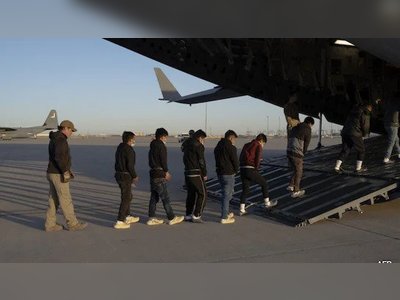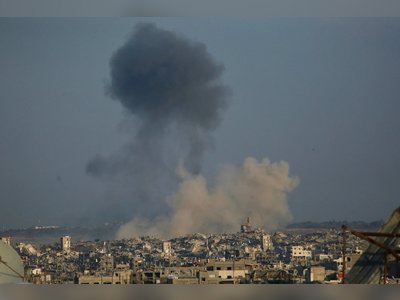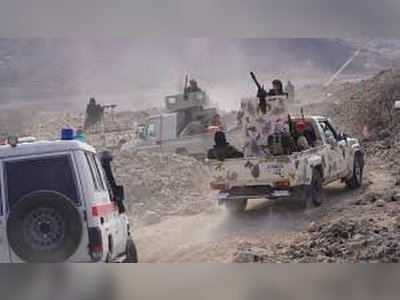
Tensions Rise Among Alawites in Homs Amid Fears of Reprisals
Amid ongoing violence and instability, Alawite communities in Homs express fear of retaliation as a new government takes shape.
In Homs, Syria, outside the political security directorate building, a group of armed guards engaged in heated discussions about justice and retribution.
Among them, Sado Junaid recounted the trauma endured by his family due to the regime's oppression, as he and others debated whether alleged crimes should be met with torture before formal trials take place.
The conversations reflect a pervasive atmosphere of fear among Homs' Alawite community, whose members worry about retaliation for their past affiliations with the deposed Assad regime.
Homs, long recognized as a focal point for the anti-Assad uprising, has seen a deterioration in conditions for its Alawite residents since the regime's fall.
Security forces under the newly established authority are reportedly conducting extensive raids against individuals associated with the previous government, leaving many Alawites on edge amid fears of abduction and violence against them.
Junaid noted that he holds no animosity towards ordinary Alawites, advocating instead for justice against those who committed crimes, though the identities of his targets remain unclear.
Abu Mohammed, a former army captain, expressed his desolation as he spends most of his days confined to his home, scrolling through social media reports of attacks against Alawite villages.
Reports of violence have been prevalent, with various sources indicating that members of Hayat Tahrir al-Sham (HTS), an opposition group, have conducted operations against Alawite civilians.
Despite claims of protection by HTS fighters, residents like Abu Mohammed report that they feel vulnerable and isolated, with their former military colleagues having either disappeared or gone into hiding.
The ongoing conflict has left deep scars in Homs, where neighborhoods such as Baba Amr suffered massive destruction during the civil war.
Many Alawites are confronting the unsettling reality of possibly encountering former regime officials who are also still present, albeit in hiding.
The current military and security landscape in Homs is characterized by increased visibility of HTS fighters, stationed at pivotal intersections to maintain a fragile peace between the Alawite and Sunni communities.
Their stated aim is to prevent outbreaks of violence, although local sentiment among Alawites diverges, highlighting fears about ongoing threats to their safety.
The environment in the region remains perilous; instances of violence targeting Alawite individuals and families are frequent yet often difficult to authenticate due to the chaotic state of local security.
Reports and analyses indicate a complex interplay of power dynamics, with remnants of the defunct regime hiding among the populace.
Simultaneously, developments in Idlib province highlight continued military action as coalition drones struck a vehicle suspected of transporting ISIS leaders, underscoring the ongoing security challenges in the region amidst the broader civil conflict.
In related events, Syrian authorities recently announced the arrest of three men linked to the infamous Tadamon massacre, a notorious incident involving the killing of civilians by government forces in a suburb of Damascus in 2013. These arrests are part of a larger effort by the transitional government to hold accountable those involved in crimes committed during the lengthy civil war.
The new authorities, emerging from the ashes of the old regime, are faced with the monumental task of establishing order and addressing the grievances of diverse sectarian groups while managing the volatile situation that continues to challenge the fragility of peace in Syria.
Among them, Sado Junaid recounted the trauma endured by his family due to the regime's oppression, as he and others debated whether alleged crimes should be met with torture before formal trials take place.
The conversations reflect a pervasive atmosphere of fear among Homs' Alawite community, whose members worry about retaliation for their past affiliations with the deposed Assad regime.
Homs, long recognized as a focal point for the anti-Assad uprising, has seen a deterioration in conditions for its Alawite residents since the regime's fall.
Security forces under the newly established authority are reportedly conducting extensive raids against individuals associated with the previous government, leaving many Alawites on edge amid fears of abduction and violence against them.
Junaid noted that he holds no animosity towards ordinary Alawites, advocating instead for justice against those who committed crimes, though the identities of his targets remain unclear.
Abu Mohammed, a former army captain, expressed his desolation as he spends most of his days confined to his home, scrolling through social media reports of attacks against Alawite villages.
Reports of violence have been prevalent, with various sources indicating that members of Hayat Tahrir al-Sham (HTS), an opposition group, have conducted operations against Alawite civilians.
Despite claims of protection by HTS fighters, residents like Abu Mohammed report that they feel vulnerable and isolated, with their former military colleagues having either disappeared or gone into hiding.
The ongoing conflict has left deep scars in Homs, where neighborhoods such as Baba Amr suffered massive destruction during the civil war.
Many Alawites are confronting the unsettling reality of possibly encountering former regime officials who are also still present, albeit in hiding.
The current military and security landscape in Homs is characterized by increased visibility of HTS fighters, stationed at pivotal intersections to maintain a fragile peace between the Alawite and Sunni communities.
Their stated aim is to prevent outbreaks of violence, although local sentiment among Alawites diverges, highlighting fears about ongoing threats to their safety.
The environment in the region remains perilous; instances of violence targeting Alawite individuals and families are frequent yet often difficult to authenticate due to the chaotic state of local security.
Reports and analyses indicate a complex interplay of power dynamics, with remnants of the defunct regime hiding among the populace.
Simultaneously, developments in Idlib province highlight continued military action as coalition drones struck a vehicle suspected of transporting ISIS leaders, underscoring the ongoing security challenges in the region amidst the broader civil conflict.
In related events, Syrian authorities recently announced the arrest of three men linked to the infamous Tadamon massacre, a notorious incident involving the killing of civilians by government forces in a suburb of Damascus in 2013. These arrests are part of a larger effort by the transitional government to hold accountable those involved in crimes committed during the lengthy civil war.
The new authorities, emerging from the ashes of the old regime, are faced with the monumental task of establishing order and addressing the grievances of diverse sectarian groups while managing the volatile situation that continues to challenge the fragility of peace in Syria.











